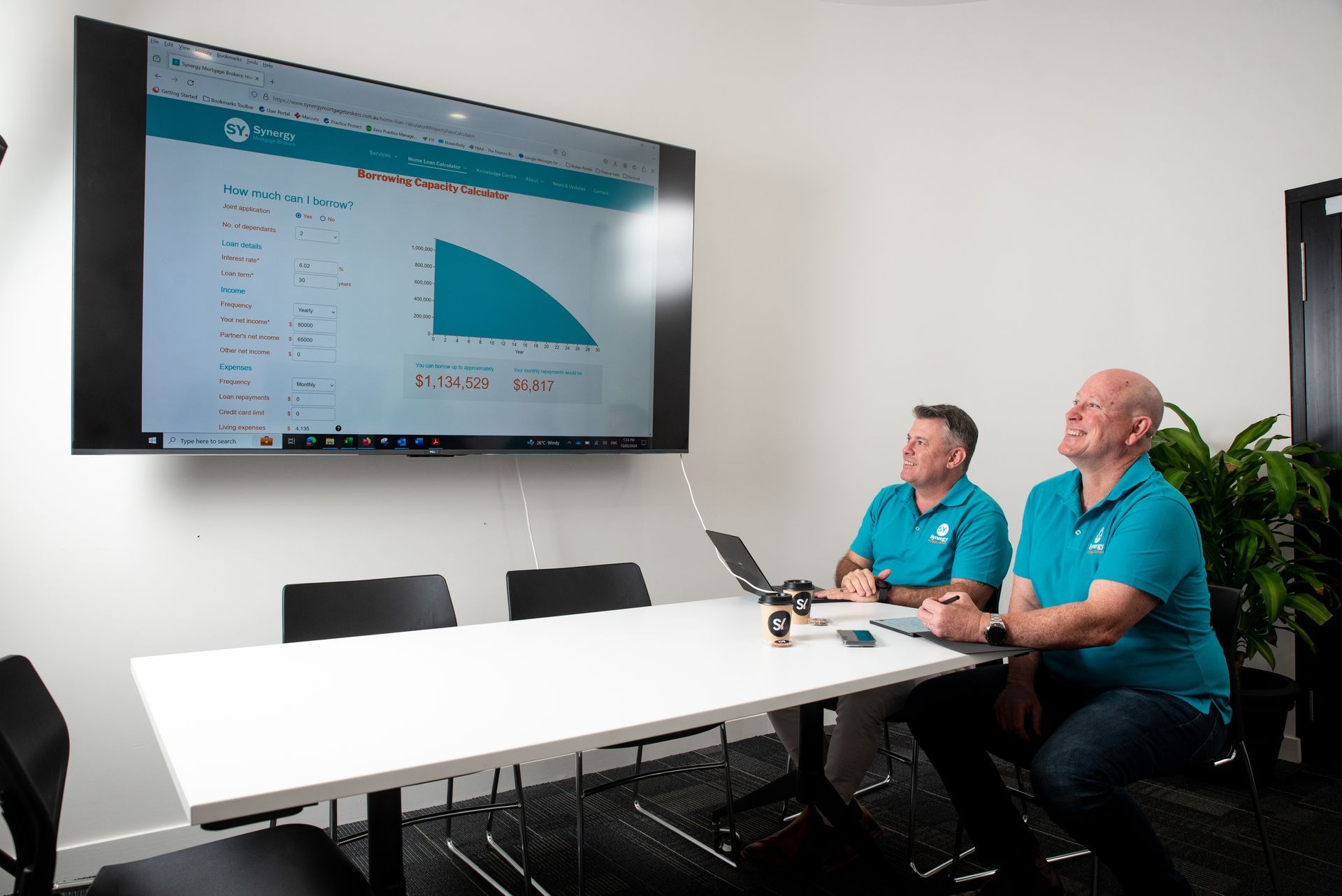How to Pay Off Your Mortgage in 7 Years: The Strategy Banks Don't Want You to Know
Picture this: you've just secured a $400,000 mortgage at 6% interest over 30 years, and you're feeling proud of your new home purchase. Here's what your bank won't tell you upfront – you'll end up paying nearly $463,000 in interest alone. That's more than the original loan amount!
The numbers become even more striking when you realise that paying off your mortgage in just 7 years instead of 30 could save you hundreds of thousands in interest payments. Think about it this way: the average millionaire pays off their house in only 10.2 years, and you can actually beat that timeline with the right approach.
Consider these eye-opening examples of what small changes can achieve. Making just one extra payment quarterly helps you pay off your mortgage nearly 15 years early and saves a massive $184,000 in interest. Even more impressive? Reducing your interest rate from 7% to 5% on a 25-year mortgage saves you $146,639 in interest. Something as simple as adding $100 extra per month to your repayments saves approximately $27,000 in interest and cuts two years off your loan term.
The question is: are you ready to keep those thousands in your own pocket instead of handing them over to your bank?
This guide reveals practical, proven strategies that can help you pay off your mortgage faster than most Australian homeowners ever imagine possible. You'll discover exactly how to optimise your interest rate, make the most of offset accounts, and structure your repayment schedules to slash years off your mortgage term.
Get the best interest rate you can
Securing the lowest possible interest rate becomes your foundation for achieving mortgage freedom in just 7 years. The gap between an average rate and a competitive one can save you thousands of dollars over your loan's lifetime.
Compare lenders and negotiate
Banks make substantial profits from something called the "mortgage loyalty tax". Most Australian financial institutions roll out their red carpet for new customers with attractive rates, while existing customers continue paying higher rates.
Research becomes your strongest weapon before any negotiation. Compile a list of competitive rates from other lenders and use this information as your bargaining chip. Here's a pro tip: when you call your bank, ask specifically for their retention team rather than the general call centre. These specialists hold more authority to offer better rates.
Confidence pays off during negotiations. Tell them you're aware of better offers elsewhere and you'd like them to match or beat those rates. Should they push back, mention the "three magic words": mortgage discharge form. This immediately signals you're serious about switching lenders if they won't budge on rates.
Your negotiation position strengthens with these factors:
- Clean payment history (no missed payments)
- Loan-to-value ratio (LVR) below 80%
- Stable full-time employment
- Other debts are completely paid off
Don't underestimate small improvements. A rate reduction of just 0.25% on a mortgage saves you over $9,300 over five years.
Understand fixed vs variable rates
The choice between fixed and variable interest rates directly impacts your ability to pay off your mortgage quickly.
Fixed interest rates stay locked for a set period, typically one to five years. Your budget gets complete certainty since repayments won't change during this time. However, you miss out on lower repayments if market rates drop. Fixed-rate loans also typically offer fewer features and may charge significant break costs when you want to make substantial extra repayments.
Variable interest rates move with market conditions and lender decisions. While this creates some uncertainty, variable loans usually offer more flexibility through features like unlimited extra repayments, redraw facilities, and offset accounts. These features prove particularly valuable when you're implementing strategies to pay off your mortgage in 7 years.
Can't decide which option suits you best? A split loan combines both fixed and variable components. This approach provides some repayment stability while still allowing you access to flexible features.
Need help finding the best mortgage rates? Contact Synergy Mortgage Brokers for professional advice on securing and negotiating the most competitive interest rates for your home loan.
Keep paying your old repayment amount
Here's where most Australian homeowners make a costly mistake. After successfully securing a lower interest rate, they immediately drop their repayments to match the new minimum required amount. This feels logical – why pay more than you need to?
The reality is quite different. Maintaining your original payment amount creates one of the most powerful acceleration effects you can achieve on your mortgage.
Don't reduce payments after refinancing
Think of it this way: when you keep paying the same amount after refinancing, you're essentially supercharging your loan repayments. The difference is that significantly more of each payment now attacks your principal balance rather than disappearing into interest payments. This approach builds equity faster and dramatically cuts the time needed to achieve mortgage freedom.
The numbers tell the story clearly. Take a $917,390 home loan where you've managed to reduce your interest rate by just 0.25% (from 5.85% to 5.60%). Your monthly repayment drops by $146.78, but here's the key – continue paying that original amount and you'll save approximately $70,180.65 in interest over your loan's life.
That's money staying in your pocket rather than padding your lender's profits.
Redirect savings into your loan
Every dollar you redirect back into your mortgage becomes a double-strength weapon against your debt. It immediately reduces your principal balance while simultaneously decreasing the interest calculated on all future payments.
The benefits stack up quickly:
- Slash total interest costs: Your outstanding balance drops faster, which means less interest calculated on that shrinking balance
- Build financial buffers: Creating payment headroom during low-interest periods protects you against future rate rises or unexpected expenses
- Accelerate equity growth: The gap between your home's value and what you owe widens more rapidly, opening up other financial opportunities
- Fast-track mortgage freedom: Higher payments can eliminate years from your loan term
This strategy becomes particularly potent when your income grows. Rather than inflating your lifestyle with that pay rise or bonus, channel the extra money straight into your mortgage. You were managing perfectly well before that income boost – you won't miss what never becomes part of your regular spending.
The magic happens when you transform what could have been small monthly lifestyle improvements into substantial long-term wealth building, putting you on track for mortgage freedom in a fraction of the standard timeframe.
Use an offset account to reduce interest
Offset accounts stand out as one of the most effective tools for accelerating your mortgage payoff timeline. What makes this strategy particularly appealing? It requires no discipline or sacrifice - your existing money simply works harder for you.
How offset accounts work
Think of an offset account as a transaction account that's directly linked to your home loan. Here's where it gets interesting: the balance in your offset account gets subtracted from your loan balance before interest calculations happen.
Let's say you have a $400,000 loan with $50,000 sitting in your offset account. You'll only pay interest on $350,000. This setup immediately reduces your interest burden without requiring any extra payments. Since interest gets calculated daily and charged monthly, even fluctuating balances provide ongoing benefits.
Most Australian lenders offer 100% offset accounts with their variable rate home loans, meaning every dollar in your offset works to reduce your loan interest. Many institutions also allow you to link multiple offset accounts to a single loan, helping you organise different savings goals while all funds work against your mortgage.
Why are they better than redraw
Both offset accounts and redraw facilities reduce loan interest, but they differ significantly when it comes to flexibility and accessibility. Your offset account funds remain in a separate transaction account, accessible anytime without restrictions. Redraw facilities typically impose limitations on withdrawal amounts and frequency, potentially charging fees for each transaction.
Offset accounts also deliver significant advantages for day-to-day banking:
- Instant access to funds via ATMs, debit cards, and electronic payments
- No reduction in availability as your loan balance decreases
- Regular transaction capabilities, including bill payments and direct debits
- Tax advantages, especially for investment properties
Link all savings to your offset
Want to maximise your offset account's impact? Direct all possible funds through it. Having your salary deposited directly into your offset account ensures every dollar works to reduce interest from the moment it arrives. Even for just a few days each month, this strategy compounds over time.
Consider consolidating multiple savings accounts into your offset. If your mortgage interest rate exceeds what you earn on separate savings accounts (as it typically does), you'll benefit financially by moving those funds to offset your loan.
Need help setting up an effective offset account strategy? Contact Synergy Mortgage Brokers for professional mortgage broking services that can help you maximise interest savings.
Offset accounts demonstrate the principle of making your money multitask - providing accessible funds for daily needs while actively reducing your mortgage burden without additional effort on your part.
Switch to fortnightly repayments
The simplest mortgage acceleration strategy requires nothing more than changing when you make payments. Fortnightly repayments create a powerful effect on your loan timeline without requiring additional funds from your budget.
How does this add an extra payment each year?
Here's the mathematics behind this approach – and it's simpler than most homeowners realise. Monthly payments mean 12 payments per year. Fortnightly payments (every two weeks) result in 26 half-payments throughout the year. That seemingly small change delivers the equivalent of 13 full monthly payments annually – effectively adding an extra payment without you feeling the pinch.
The implementation couldn't be more straightforward. Take your monthly payment, divide it by two, and pay that amount every fortnight. Your monthly mortgage payment of $3,057.98 becomes a fortnightly payment of $1,528.99.
Here's where the magic happens: monthly payments total $36,695.77 annually, while fortnightly payments amount to $39,753.75 – that's an additional $3,057.98 working toward your mortgage freedom each year.
Why does it reduce interest faster?
Fortnightly payments attack your interest burden from multiple angles. Mortgage interest accrues daily, which means every payment immediately reduces the principal balance used for interest calculations. With fortnightly payments, you're chipping away at this balance 26 times per year instead of just 12.
This strategy builds momentum over time. Each payment contains more principal and less interest than the previous one, creating an acceleration effect that becomes increasingly powerful.
The results speak for themselves:
- Potential interest savings exceeding $192,333 over your loan term
- Nearly six years cut from a standard 30-year mortgage
- Daily interest calculations work in your favour twice as often
Critical Point: Your fortnightly payment must be exactly half your monthly payment. This strategy works particularly well when combined with the offset account and extra payment approaches covered earlier, creating a compounding effect that brings your 7-year mortgage goal within reach.
Make extra repayments whenever possible
Beyond refinancing and payment restructuring, consistent extra repayments remain one of the most direct paths to mortgage freedom. This strategy requires no complex calculations or special accounts – just the discipline to pay more than your minimum amount whenever possible.
Round up your payments
The simplest way to accelerate your mortgage payoff? Round up your regular repayments. If your monthly payment sits at $2,935.66, bump it up to $3,057.98. That extra $122.32 might feel insignificant, but it accumulates to nearly $1,528.99 annually, going straight toward your loan principal.
Why this works: Every additional dollar chips away at your principal balance, which immediately reduces the interest calculated on future payments. Rounding up creates an automated overpayment habit without requiring loan restructuring.
Use bonuses or tax returns
Tax refunds, work bonuses, and unexpected windfalls present perfect opportunities for lump-sum principal payments. Even applying a portion of these amounts can substantially impact your loan term, particularly when done early in your mortgage journey.
Important note: Before directing tax refunds to your mortgage, address any high-interest debt like credit cards and ensure you have an adequate emergency fund. Once these financial foundations are solid, your refund becomes a powerful tool for principal reduction and interest savings.
Always specify that lump sum payments should go directly toward principal reduction, not future scheduled payments.
Automate extra contributions
Remove the temptation to spend extra money elsewhere by setting up automatic additional transfers. Align these automated payments with your pay cycle for maximum effectiveness.
Consider these automation options:
- Weekly or fortnightly automatic transfers matching your budget capacity
- Payment calculations based on a shorter loan term, automatically building in higher contributions
- Salary sacrifice arrangements that direct bonus payments straight to your mortgage
The key lies in combining these approaches consistently. You'll watch your mortgage balance decrease significantly faster than standard repayment schedules allow, bringing that 7-year payoff goal within reach.
Use your credit card to your advantage
Most Australian homeowners view credit cards as financial obstacles, but smart borrowers turn them into mortgage-busting tools when paired correctly with offset accounts.
Pay expenses on card, keep cash in offset
Here's a strategy that turns everyday spending into mortgage acceleration: charge your regular expenses to your credit card while keeping your cash sitting in your offset account longer. Rather than withdrawing from your offset account immediately, let your income work to reduce mortgage interest while you cover daily costs through your credit card. This approach maximises the time your money spends offsetting your loan balance until you need to pay the credit card bill.
The mathematics work in your favour because your offset account continues reducing daily interest calculations on your mortgage while you delay the actual cash outflow for weeks.
Always pay off the card in full
This strategy succeeds or fails based on one critical rule: pay your credit card balance completely before the interest-free period ends. Most Australian credit cards provide 30-55 days interest-free on purchases. Credit card interest rates typically sit well above mortgage rates, so any interest charges will quickly wipe out your mortgage interest savings. Set up automatic payments from your offset account to clear the balance just before the due date – this maximises the offset benefit.
Avoid overspending
Financial discipline makes or breaks this technique. Credit cards can tempt you into spending beyond your normal budget, which defeats the entire purpose of accelerating your mortgage payoff. Stick to your established budget, review statements regularly, and resist impulse purchases. A lower credit limit can help reduce temptation.
Remember: this strategy only works when your spending patterns remain exactly the same. The credit card simply delays when cash leaves your offset account – it doesn't change how much you spend.
Conclusion
Mortgage freedom in 7 years doesn't have to be complicated. The strategies outlined above work because they attack your loan from multiple angles, each one building momentum toward the same goal.
Think of these approaches as tools that work together rather than standalone solutions. Securing the lowest possible interest rate provides your foundation. Maintaining those higher repayments after refinancing puts that foundation to work immediately. Your offset account turns everyday banking into a mortgage-fighting weapon, while fortnightly payments quietly add an extra payment each year.
The beauty lies in how these strategies compound. Small extra contributions through rounded payments, strategic use of tax refunds, and even clever credit card timing all chip away at your principal balance. Each dollar you redirect toward your mortgage today saves you multiple dollars in interest tomorrow.
Consider the financial impact beyond just early mortgage freedom. You could potentially save hundreds of thousands in interest payments that would otherwise flow straight to your lender. That money remains available for other investment opportunities, early retirement, or simply the peace of mind that comes with owning your home outright.
The most important factor? Consistency beats perfection every time. You don't need to implement every strategy immediately. Start with what fits your current situation - perhaps negotiating a better interest rate or switching to fortnightly payments. Once you see the momentum building, gradually add other approaches as they become comfortable.
Ready to accelerate your mortgage payoff? Contact Synergy Mortgage Brokers today for professional advice tailored to your specific financial situation.
The journey requires discipline, but the reward speaks for itself. Most Australian homeowners spend three decades paying off their mortgage. With the right approach, you can join the ranks of those who achieve mortgage freedom in a fraction of that time - keeping tens of thousands in interest payments where they belong: in your pocket.
Key Takeaways
These proven strategies can help you pay off your mortgage in 7 years instead of 30, potentially saving hundreds of thousands in interest payments.
• Secure the lowest interest rate possible - Even a 0.25% reduction can save over $9,300 in five years; negotiate with your current lender or switch to a competitor.
• Keep paying your original amount after refinancing - Don't reduce payments when you get a lower rate; redirect the savings directly toward your principal balance.
• Maximise offset accounts - Link all savings to your offset account so every dollar reduces daily interest calculations while remaining accessible for daily use.
• Switch to fortnightly payments - Pay half your monthly amount every two weeks to make 13 full payments yearly instead of 12, cutting years off your loan.
• Make extra repayments consistently - Round up payments, use tax refunds and bonuses toward principal, and automate additional contributions to accelerate payoff.
The key is combining multiple strategies rather than relying on just one approach. Start with what fits your situation best, then gradually add other methods as you build momentum toward mortgage freedom.
Subscribe Today!
Stay in the loop - subscribe to our newsletter for the latest trends and insights.
Contact Us Today
We’d love to hear from you. Choose the most convenient method and we’ll get back to you as soon as we can.









